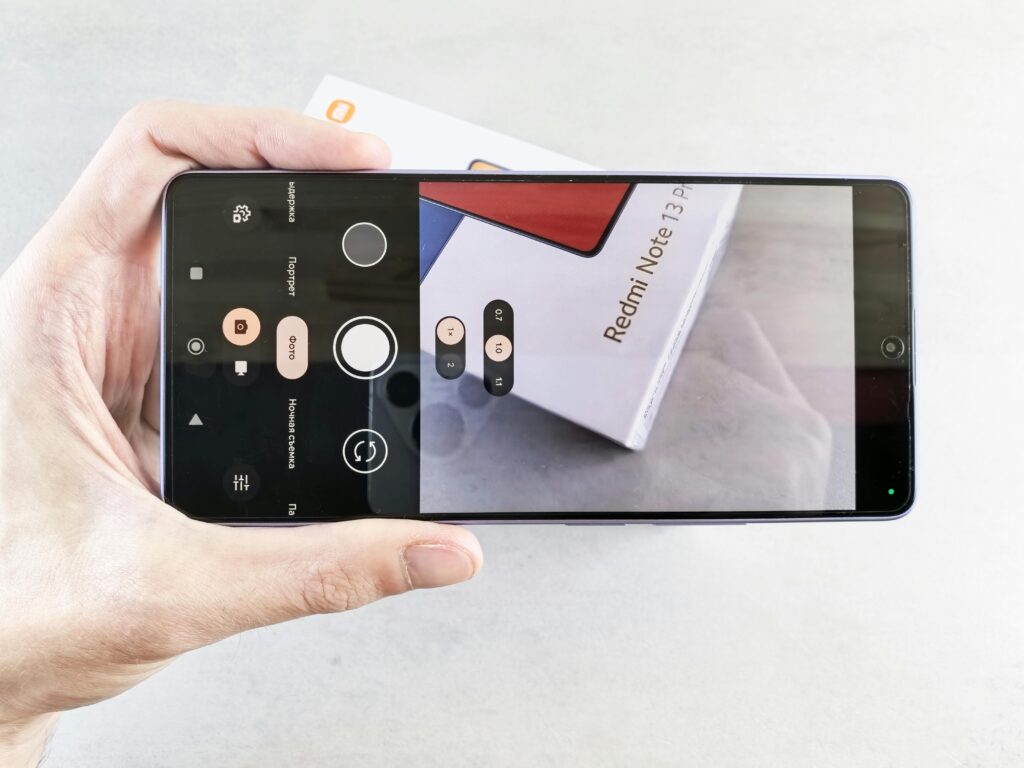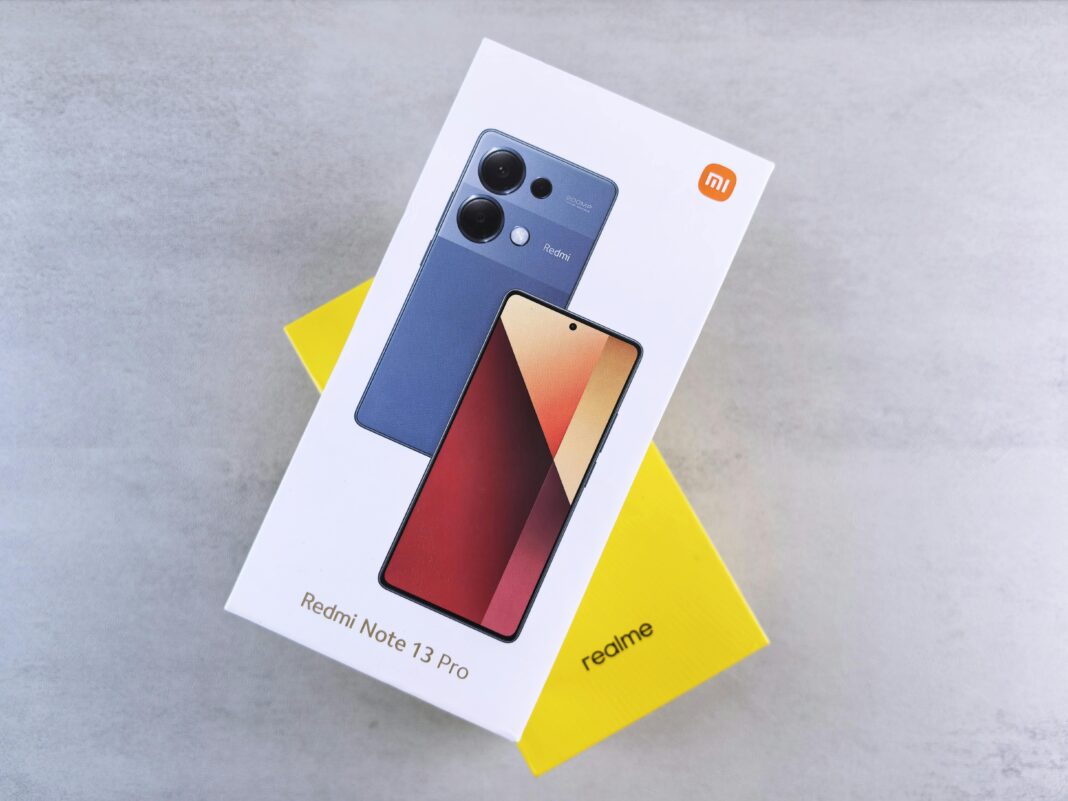The smartphone industry is fiercely competitive, especially in the mid-range segment where brands constantly push boundaries to offer premium features at affordable prices. Xiaomi’s Redmi Note series has been a dominant force in this space for years, delivering high-value devices that often outperform their price tags. The latest entry, the Redmi Note 13 Pro+, promises significant upgrades in display technology, performance, and charging speeds. But with rivals like the Realme 11 Pro+, Poco X6 Pro, and Samsung Galaxy A54 vying for attention, does Xiaomi’s offering still stand out?

This in-depth review will examine every aspect of the Redmi Note 13 Pro+, from its premium design and stunning AMOLED display to its MediaTek Dimensity 7200-Ultra performance, 200MP camera system, and ultra-fast 120W charging. We’ll also compare it to key competitors, analyze real-world usage, and determine whether it deserves the title of “Mid-Range King.”
Design & Build Quality: A Premium Feel at an Affordable Price
Materials & Ergonomics
The Redmi Note 13 Pro+ marks a significant design upgrade over its predecessors. Xiaomi has opted for a glass back (Gorilla Glass 5) with a frosted matte finish, which not only looks premium but also minimizes fingerprint smudges—a common issue with glossy phones. The plastic frame is well-crafted, mimicking metal in both look and feel, ensuring durability without adding excessive weight.
The device weighs 204 grams, slightly heavier than the Redmi Note 12 Pro+, but the weight distribution ensures a comfortable grip. The curved edges enhance ergonomics, making it easier to hold during long browsing or gaming sessions.
IP53 Rating: A Rare Feature in Mid-Range Phones
One standout feature is the IP53 rating, which provides dust resistance and protection against light water splashes. While not fully waterproof, this makes the phone more durable than many competitors in the same price range.
Buttons & Ports
- Side-mounted fingerprint sensor (embedded in the power button) – Fast and accurate.
- IR blaster – A legacy Xiaomi feature that lets you control TVs, ACs, and other appliances.
- USB-C port (supports 120W fast charging).
- Dual stereo speakers – Improved over the previous model, with better clarity and bass.
- No 3.5mm headphone jack – A downside for wired audio lovers.
Comparison with Competitors
- Realme 11 Pro+ – Offers a vegan leather back option but lacks an IP rating.
- Poco X6 Pro – More gaming-focused but has a less premium build.
- Samsung Galaxy A54 – IP67 rating (better water resistance) but slower charging.
Verdict on Design
The Redmi Note 13 Pro+ delivers a near-flagship design at a mid-range price. The glass back, curved display, and IP53 rating give it an edge over many rivals, making it one of the best-looking phones in its segment.
Display: One of the Best Mid-Range Screens in 2024
AMOLED Panel with 1.5K Resolution
The 6.67-inch AMOLED display is a major highlight, offering a 1220p resolution (2712 x 1220 pixels)—sharper than standard 1080p screens found in most mid-range phones.
Key Display Features
- 120Hz adaptive refresh rate – Smooth scrolling and gaming.
- 1800 nits peak brightness – Excellent visibility under sunlight.
- 100% DCI-P3 color gamut – Vibrant, accurate colors.
- HDR10+ support – Enhanced contrast for streaming.
- 1920Hz PWM dimming – Reduces eye strain in low light.
Curved vs. Flat Display Debate
The slightly curved edges add a premium look but can cause accidental touches. Users who prefer flat screens might lean toward the Poco X6 Pro or Realme 11 Pro+.
How It Compares to Competitors
| Phone | Display Type | Resolution | Brightness | Refresh Rate |
|---|---|---|---|---|
| Redmi Note 13 Pro+ | AMOLED | 1.5K (1220p) | 1800 nits | 120Hz (adaptive) |
| Realme 11 Pro+ | AMOLED | 1080p | 950 nits | 120Hz |
| Poco X6 Pro | AMOLED | 1080p | 1200 nits | 144Hz |
| Samsung A54 | Super AMOLED | 1080p | 1000 nits | 120Hz |
Real-World Usage
- Media Consumption: Netflix and YouTube videos look stunning in HDR.
- Gaming: The 120Hz refresh rate makes games like COD Mobile feel smoother.
- Reading & Browsing: The high resolution makes text crisp and easy to read.
Verdict on Display
The Redmi Note 13 Pro+ has one of the best displays in the mid-range market, beating many competitors in brightness, resolution, and color accuracy.
Performance: MediaTek Dimensity 7200-Ultra – How Powerful Is It?
Chipset & Benchmark Scores
The Dimensity 7200-Ultra is a 4nm chip designed for efficiency and mid-range performance.
Benchmark Comparisons:
- AnTuTu v10: ~600,000 (similar to Snapdragon 7 Gen 1).
- Geekbench 6: Single-core: 950 | Multi-core: 2,400.
- 3DMark Wild Life: ~3,200 points (decent for gaming).
Gaming Performance
- Genshin Impact (Medium Settings): 50-55 FPS.
- COD Mobile (Max Settings): 60 FPS (stable).
- PUBG Mobile (Ultra HD): 40 FPS (better with optimizations).
Thermal Performance
The phone warms up slightly during extended gaming but doesn’t throttle aggressively, thanks to Xiaomi’s cooling system.
RAM & Storage
- Up to 12GB LPDDR5 RAM (expandable via virtual RAM).
- Up to 512GB UFS 3.1 storage (fast app loading).
Software: MIUI 14 on Android 13
- Pros: Feature-rich, highly customizable.
- Cons: Some bloatware, ads in system apps (can be disabled).
- Update Policy: 2 major Android updates + 4 years of security patches.
Verdict on Performance
The Dimensity 7200-Ultra is good for daily tasks and moderate gaming, but heavy gamers might prefer the Poco X6 Pro (Dimensity 8300-Ultra) or Realme GT Neo 5 (Snapdragon 8+ Gen 1).
Cameras: Is the 200MP Sensor Worth the Hype?
Camera Hardware
- Main: 200MP (Samsung HP3, f/1.65, OIS).
- Ultrawide: 8MP (f/2.2, 120° FOV).
- Macro: 2MP (mostly useless).
- Front Camera: 16MP (f/2.4).
Daylight Photography
- 200MP Mode: High detail but large file sizes (only useful for cropping).
- Default 12.5MP pixel-binned shots: Well-balanced colors, good dynamic range.
- 2x & 4x Zoom: Digital zoom works surprisingly well due to the high-resolution sensor.
Low-Light Performance
- Night Mode helps, but images can look soft compared to Google Pixel 7a.
- Ultrawide struggles in dim lighting.
Video Recording
- 4K@30fps (main cam only) with decent stabilization.
- 1080p@60fps is the best balance for smooth footage.
Selfie Camera
- 16MP shooter does well in daylight but struggles in low light.
- Portrait mode has good edge detection.
Verdict on Cameras
The 200MP sensor is impressive on paper, but real-world performance is good, not exceptional. The Pixel 7a and Galaxy A54 still lead in image processing.
Battery Life & Charging: All-Day Endurance + Blazing 120W Speed
Battery Performance
- 5000mAh battery lasts 6-7 hours of screen time (mixed usage).
- Gaming drains faster (~4.5 hours of continuous play).
Charging Speed
- 120W HyperCharge refills 0-100% in just 22 minutes.
- Competitor Comparison:
- Realme 11 Pro+ (67W): ~45 mins.
- Samsung A54 (25W): ~90 mins.
Verdict on Battery
The combination of long battery life + ultra-fast charging makes it one of the best in its class.
Final Verdict: Who Should Buy the Redmi Note 13 Pro+?
Pros:
✅ Stunning 1.5K AMOLED display (1800 nits brightness).
✅ Premium glass design with IP53 rating.
✅ 120W charging (full battery in 22 mins).
✅ Solid performance for daily tasks & moderate gaming.
✅ Good main camera (200MP sensor).
Cons:
❌ No wireless charging.
❌ MIUI has bloatware.
❌ Curved edges may cause accidental touches.
❌ Low-light camera performance could be better.
Who Should Buy It?
- Media lovers who want a great display & speakers.
- Users who prioritize fast charging.
- Those seeking a premium design without flagship pricing.
Alternatives to Consider
- Best Camera: Google Pixel 7a.
- Best Performance: Poco X6 Pro (Dimensity 8300-Ultra).
- Best Software: Samsung Galaxy A54 (longer updates).
Frequently Asked Questions (FAQ)
Q: Does the Redmi Note 13 Pro+ have a microSD slot?
A: No, it does not support expandable storage.
Q: Is the battery removable?
A: No, it’s a sealed unit.
Q: Does it support 5G?
A: Yes, with wide band compatibility.
Q: Will it get Android 14 and 15?
A: Yes, Xiaomi promises two major OS updates.
Q: How does it compare to the Poco X6 Pro?
A: The Poco X6 Pro has a faster chip (Dimensity 8300-Ultra) but a less premium design.
Conclusion
The Redmi Note 13 Pro+ is a well-rounded mid-range phone with a gorgeous display, fast charging, and a premium build. While it isn’t the absolute best in gaming or low-light photography, it offers excellent value for users who want a near-flagship experience without the high price tag.
If you prioritize display quality, design, and charging speed, this is one of the best mid-range phones of 2024. However, if raw performance or camera quality is your top priority, alternatives like the Poco X6 Pro or Pixel 7a might be better choices.
Would you buy the Redmi Note 13 Pro+? Let us know in the comments!


